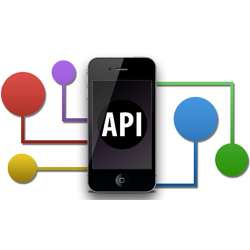
Payments has been one of the hottest segments within the financial services technology sector, driven by growth in online retailing and mobile commerce. Digital commerce relies on increasingly sophisticated systems and technology to enable and process payments. Payment companies increasingly are opening up their systems and allowing developers to utilize application programming interfaces (APIs) to facilitate digital commerce.
APIs, in their simplest form, allow two or more applications to communicate and share data. In the payments space, an example of an API might be a payment network that provides payment authorization data to an online retailer’s shopping cart. This sort of functionality has existed for many years, but recent initiatives by some of the largest payment brands to open up their platforms is already having a major impact on digital commerce.
What is driving this transformation in payments is the move towards open platforms, providing merchants, financial institutions, and technology start-ups access to information that was previously considered proprietary by companies in the payments industry. Payment networks and processors have traditionally been slow to adapt to change, but the increased demand for innovative ways for consumers to pay across channels has prompted the industry to accelerate its efforts and adapt to the new market realities.
Payment providers including Mastercard, Visa, PayPal, Stripe, First Data, Square, and many others are not only providing greater access to data, but also well-documented software development kits (SDKs) that make integration into applications easier for developers. In September, ProgrammableWeb, a site which monitors and classifies APIs, was tracking over 15,500 APIs, of which around 10%—more than 1,500 APIs—were payments-related.
Visa, the world’s largest payment network, launched Visa Developer in February, creating a tool for developers across the payments ecosystem to access data and create applications built on Visa data. This required a shift in mindset at the company, as it moved from payment applications "made by Visa" to tools "enabled by Visa."
The Visa Developer Center includes a robust set of documentation, software development kits, and a fully functional testing sandbox, all designed to support the development of new payment applications built on the Visa network. At the time of launch, Visa released 155 separate HTTP-based RESTful APIs, with the goal of eventually releasing many more; the company now has more than 180 APIs available, covering everything from fraud and risk prevention to currency conversion and peer-to-peer payments.
One example of an application that relies on Visa’s APIs was built by Emirates NDB, a Dubai-based bank that has a large, affluent base of credit card holders. Many of Emirates’ customers are frequent international travelers, and fraud prevention can be challenging when customers are in one country one day and another the next. Using Visa’s tools, Emirates was able to build a geolocation function into its mobile app that allows cardholders to verify their location when traveling overseas. This helps the bank avoid having to contact cardholders to confirm international transactions, as the mobile device serves as an additional layer of authentication.
Another company that is executing on an API strategy is San Francisco-based Stripe. John Musser, vice president of Engineering at Basho Technologies and an expert on the financial payments API sector, considers Stripe to be a best-in-class firm. "If you look across the whole landscape of thousands of web APIs, not just payments, one of the absolute standouts, right up there with Twilio (which just had a big IPO this year), is Stripe." He explained, "Stripe is disrupting the payments market by using a developer-first focus: putting all their energy around reaching developers, speaking their language, and helping them succeed." Using this strategy, Stripe has raised over $300 million in funding and grown to over 500 employees.
Apple similarly is seeking to disrupt traditional payments through the Apple Pay mobile payments and digital wallet service. The company has a suite of tools available that developers can use to integrate the payment platform into mobile apps and online shopping experiences. These tools should help Apple Pay become more prevalent as a payment option for consumers.
The ProgammableWeb API hub profiles hundreds of payment APIs, but few companies are executing on them as well as Stripe or Visa. One of the challenges to developers is actually executing well-designed applications; said Musser, "it is as likely true in the payment space as it is in any market that it is easy to underestimate how hard APIs are to do well."
According to Musser, "in the old API days, five or 10 years ago, there used to be REST vs. SOAP questions, but those are dead now. Many of the technical questions in modern web APIs are now answered with a shrug. Developers can easily deal with the technical questions, but the real blocker is the business questions." Payment companies are making the tools available, so it is incumbent on their partners—the retailers, restaurants, and mobile app developers—to devise well-thought-out applications that solve real business challenges.
It may come as a surprise that consumers remain heavily reliant on old-fashioned cash as the primary way they conduct commerce. Despite grabbing a lot of headlines, digital payments are really in their early stages of development; APIs will continue to evolve and transform the payments landscape.
Mark Broderick is a Tampa, FL-based senior research analyst covering the financial services and payments industries.



Join the Discussion (0)
Become a Member or Sign In to Post a Comment